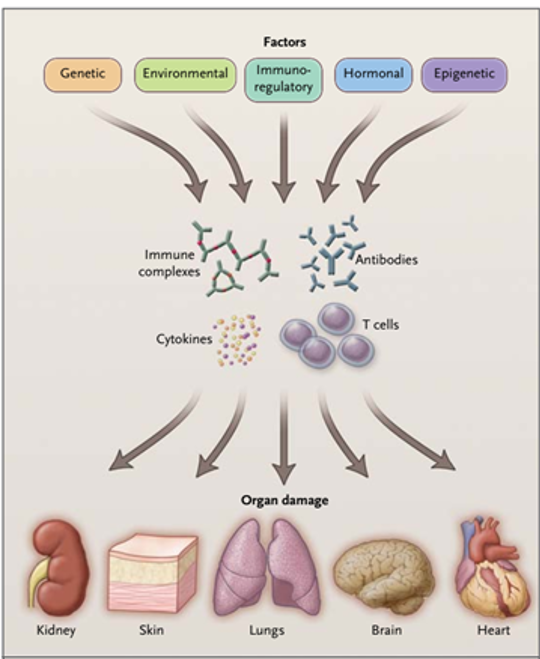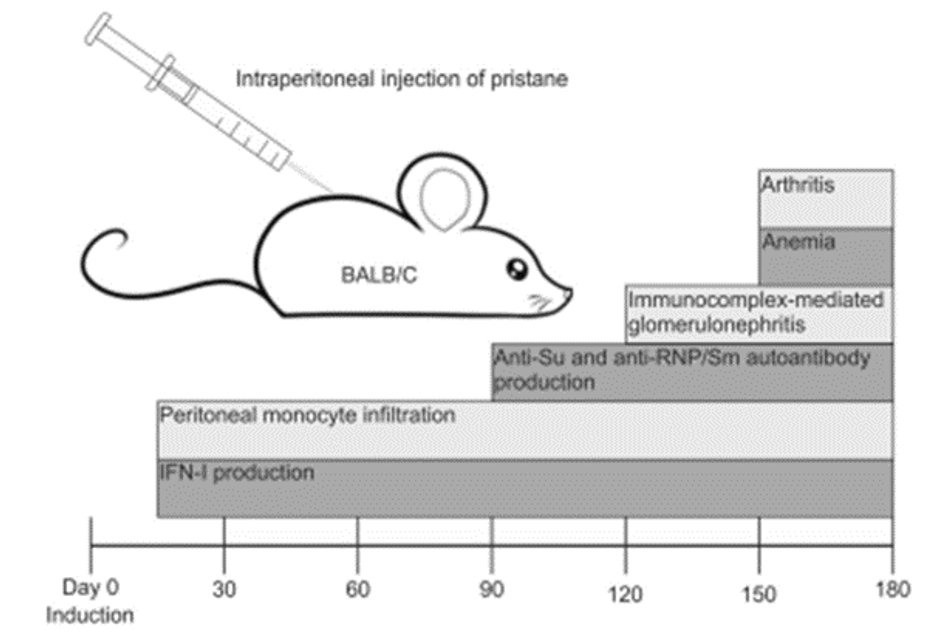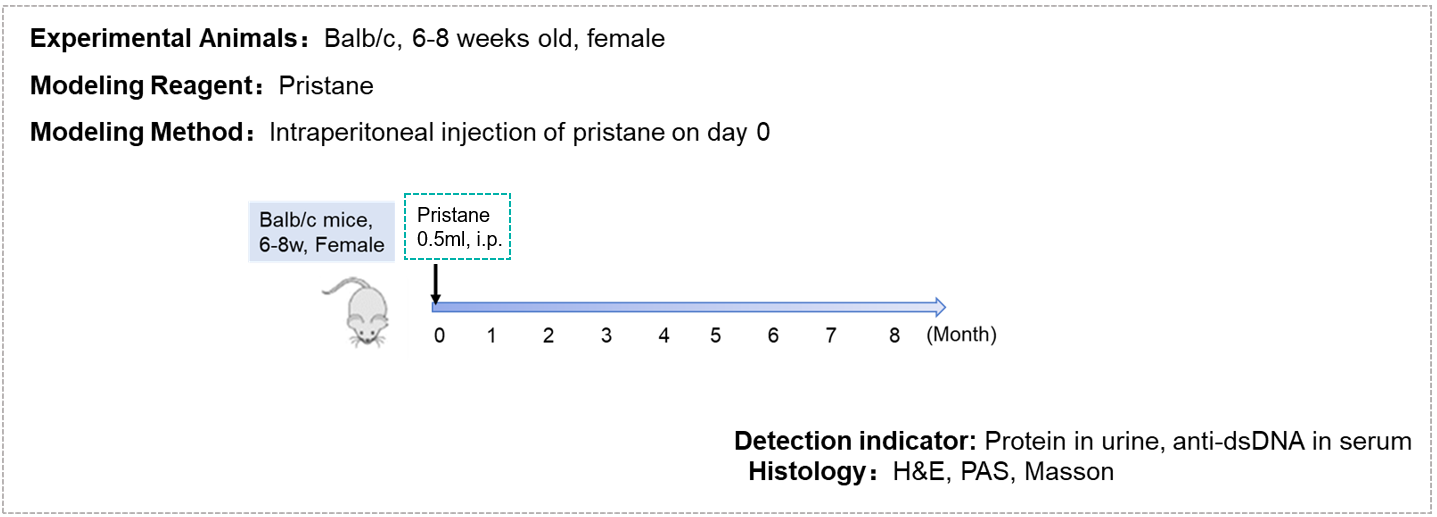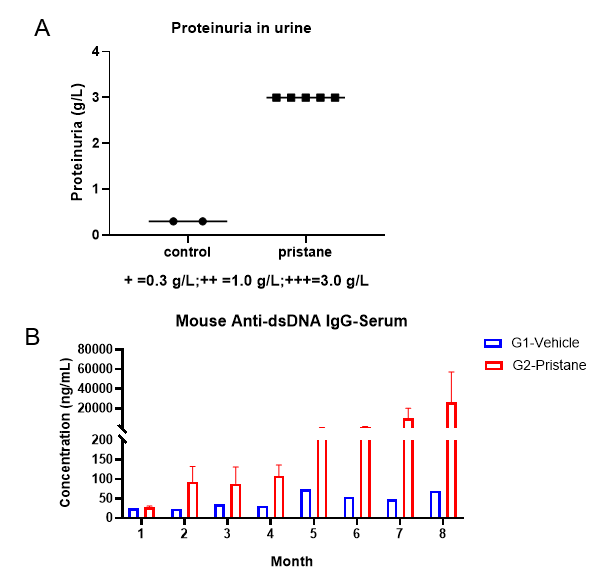Systemic lupus erythematosus (SLE) is a severe autoimmune disease characterized by dysfunction of immune regulation, overproduction of inflammatory cytokines and attack on normal tissues (heart, joints, skin, lungs, blood vessels, liver, kidneys, and the nervous system) by self-reactive cells and antibodies [1].

Fig 1. Overview of the Pathogenesis of Systemic Lupus Erythematosus [1]
Pristane, also known as hydrocarbon oil (2,6,10,14- tetramethylpentadecane, TMPD), is capable of triggering a wide range of autoantibodies. Mice receive priatane develop an ascitic fluid enriched with monoclonal antibodies, local chronic inflammation (lipogranulomas), and a rheumatoid-like erosive arthritis. These clinical manifestations resemble SLE [2].

Establishment of SLE Mouse Model based on Balb/c Mice

Pristane-induced SLE in Balb/c mice

Figure 1. Pristane increased urine protein and serum anti-dsDNA. Mice received intraperitoneal injection of pristane on day 0. Urine and blood were collected every month. The kidney tissues were collected for histologic assessment at the end of the experiment. Pristane produced significant increase in urine protein(A) and anti-dsDNA IgG in serum (B).
References
[1] Tsokos GC. Systemic lupus erythematosus. N Engl J Med. 2011, 365(22):2110-21.
[2] Freitas EC, de Oliveira MS, Monticielo OA. Pristane-induced lupus: considerations on this experimental model. Clin Rheumatol. 2017. 36(11):2403-2414.






 +86-10-56967680
+86-10-56967680 info@bbctg.com.cn
info@bbctg.com.cn